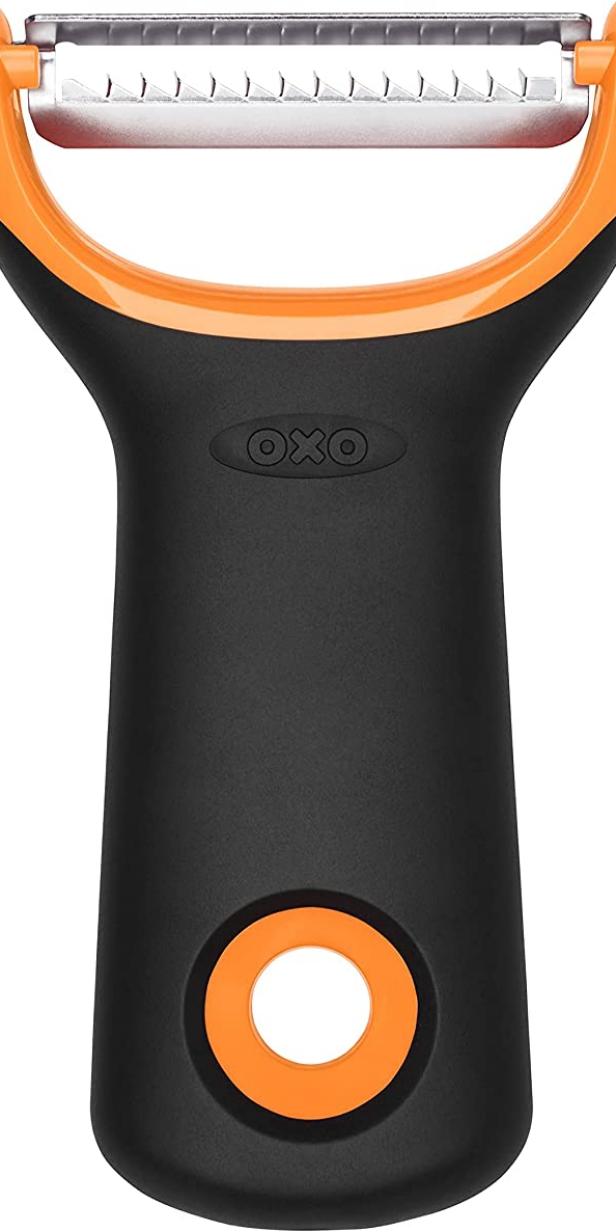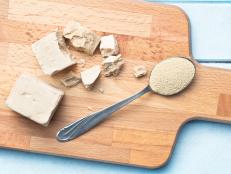How to Julienne Cut
Learn how to cut perfect veggie matchsticks just like the pros.
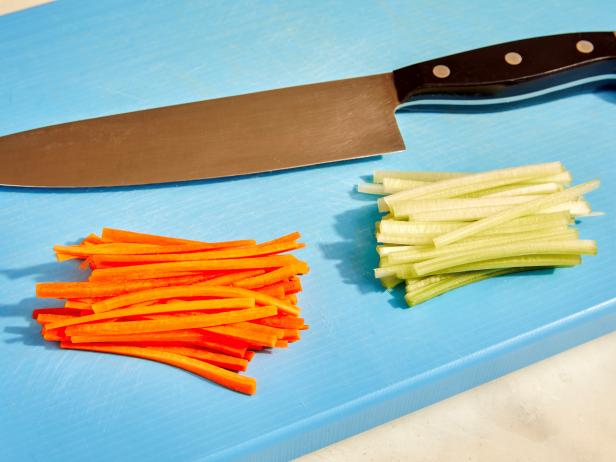
Teri Lyn Fisher
By Heath Goldman for Food Network Kitchen
Heath is a culinary editor at Food Network.
Julienning is a classic French technique with which culinary school students and chefs are quite familiar. French culinary schools make students practice their julienne cuts on carrots in the classroom and at home until their cuts are perfectly even. Most recipes created for home cooks won’t instruct you to julienne and expect you to know what to do. But perhaps you heard the term on your favorite cooking show or read it on a restaurant menu and are curious. Let’s dive in and learn more.
What Is a Julienne Cut?
What exactly is a julienne cut? We’ve certainly built up the hype. Julienne cuts are thin, even slices of a vegetable or fruit made by squaring off the edges of said veggie or fruit and cutting it into planks and then strips. Many people describe them as matchstick cuts because, well, they should look as skinny and even as a box of matches. Peppers, carrots, leeks, celery and potatoes are often julienned.
When Would You Use a Julienne Cut?
A recipe might ask you to cut matchsticks for a dish like spring rolls or sushi, which can be filled with thin even strips of veggies. Sometimes, julienned veggies top salads or other crunchy raw dishes. And shoestring fries are a classic example of julienned potatoes.
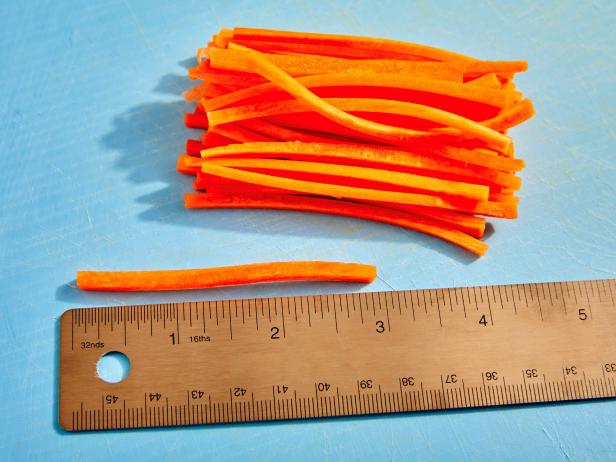
Teri Lyn Fisher
What Is the Exact Size of a Julienne Cut?
Julienne can be any length you need, although they’re typically 2 to 3 inches long and 1/8 inch thick. In culinary school, students literally measure their cuts with rulers until they memorize the size, but if you’re julienning at home, there’s no need to be that precise.
What You Need to Julienne
For the traditional method: Sharp knife and cutting board
The most important tool when julienning is a razor-sharp chef’s knife. You need it to make those small, precise, even cuts. A large cutting board is important too—that way you can mound up your pile of already julienned produce out of the way as you cut.
For the shortcut method: a food processor with a mandoline blade, a mandoline with a julienne blade or a julienne peeler
Any of these tools allows you to julienne more quickly—though not quite as perfectly. Unless you have a picky chef standing over your shoulder, no one will be the wiser. Feel free to save time by making a machine do the slicing for you. A julienne peeler is an inexpensive, fast and easy way to achieve julienne, especially if you’re working with carrots. You use it like a regular peeler; small teeth julienne the carrot as you peel it.
How to Julienne Cut
The specific steps you should take will vary depending on what you’re cutting. However, there are some general guiding principles to keep in mind.
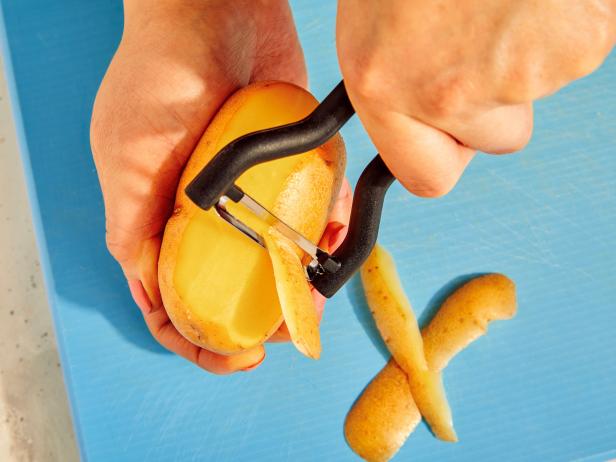
Teri Lyn Fisher
Step 1: Peel the Vegetable
If you’re working with a vegetable that can be peeled (such as a carrot, potato or stalk of celery), you should peel it because you want all of your matchsticks to look the same. Nubbly patches of carrot skin are not welcome. Fun fact, celery can be peeled, and doing so removes a lot of those stringy fibers.
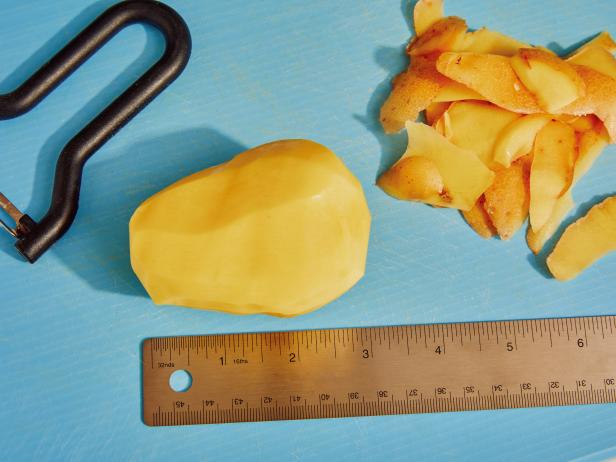
Teri Lyn Fisher
Step 2: Segment the Vegetable
Cut the vegetable into segments the desired length of your julienne. 2 to 3 inches long is a safe bet.
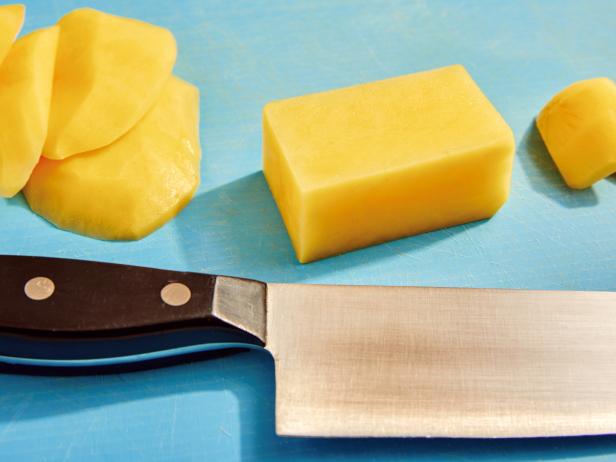
Teri Lyn Fisher
Step 3: Square off the Vegetable
Generally, you’ll want to slice off the rounded sides of whatever you’re cutting to create a rectangle or cube. If you were working in a traditional French restaurant, you’d reserve those scraps for another use instead of putting them into the julienne because they will not turn into perfect matchsticks. But if you’re julienning at home, it’s okay to turn these pieces into julienne as well. Do so by slicing the pieces into thin strips, ideally 1/8-inch thick all around.
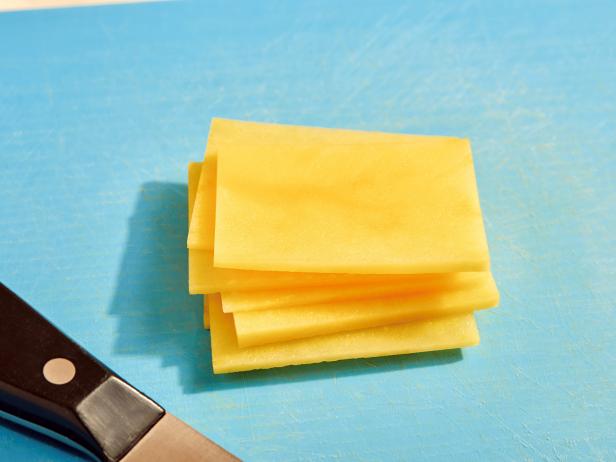
Teri Lyn Fisher
Step 4: Cut Planks
Now that you have a neat square, slice it into planks that are about 1/8 inch thick.
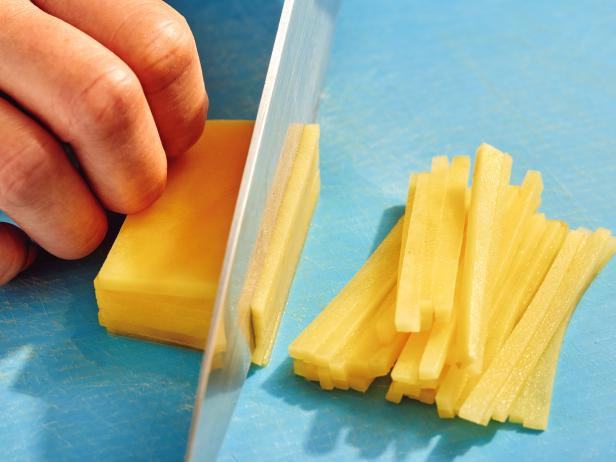
Teri Lyn Fisher
Step 5: Cut the Planks into Strips (the Julienne!)
Stack the planks and cut them into 1/8 inch thick strips. Or if it’s easier, work with one plank at a time. Make sure your fingers are tucked away under your hand, away from the blade. Use your knuckles to guide your knife. Walking your fingers backward makes the cut thicker or thinner.
Related Links:
























